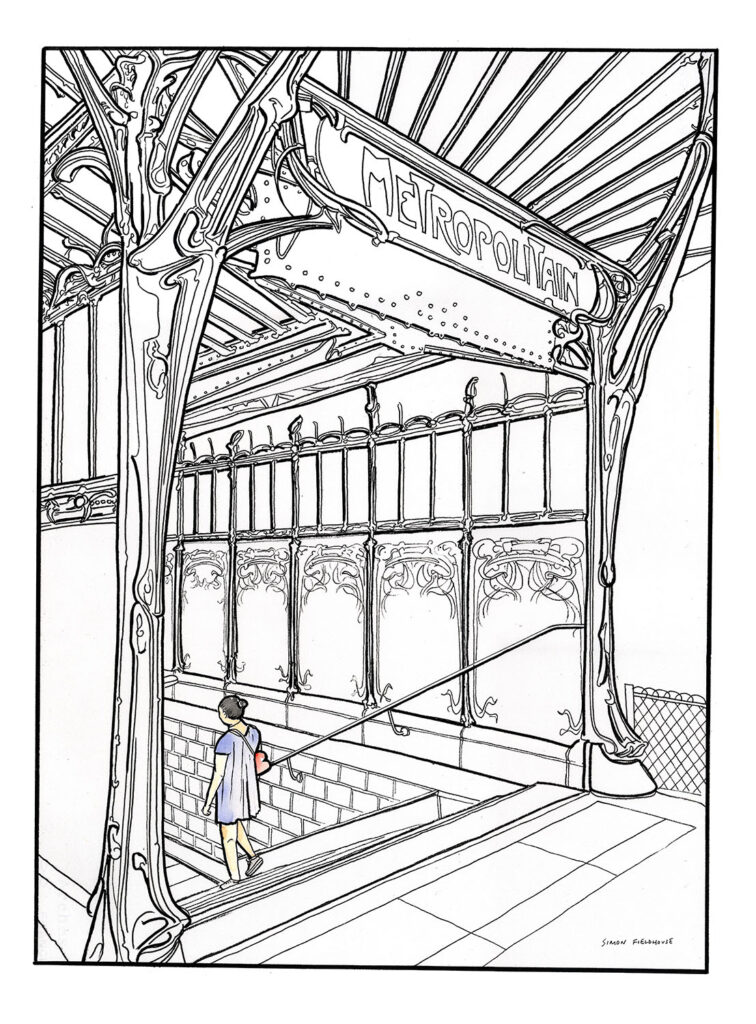
Paris Metro - Art Nouveau Entrance
The Paris Metro, renowned for its iconic Art Nouveau entrances, is a testament to the harmonious fusion of functional design and artistic expression. These entrances, designed by the celebrated architect Hector Guimard, have left an indelible mark on the cityscape of Paris, becoming not only an essential part of the transportation system but also a symbol of the Belle Époque.
Hector Guimard, a prominent figure in the Art Nouveau movement, was commissioned by the Compagnie du Métropolitain de Paris to design the entrances for the Paris Metro in the early 20th century. He sought to create structures that would not only serve as gateways to the subterranean world of transportation but also as works of art that would capture the essence of the era. Guimard drew inspiration from nature, incorporating sinuous lines, organic forms, and intricate details into his designs. The result was a series of wrought iron and glass entrances that were truly unique and emblematic of the Art Nouveau style.
The most recognizable feature of these entrances is the characteristic "Metropolitain" sign, an ornate and flowing script that embodies the fluidity of the Art Nouveau movement. This sign, often adorned with colorful glass, invites passengers to enter a world of underground elegance. The structure itself, with its sinuous ironwork and floral motifs, reflects the organic shapes and themes that were prevalent in Art Nouveau design. Each entrance is like a piece of jewelry adorning the streets of Paris.
Beyond their artistic merit, the Art Nouveau entrances serve a practical function. The elaborate canopies provide shelter from the elements, protecting passengers from rain or intense sunlight. The glass panels allow natural light to filter through, illuminating the stairwells and platforms below. In this way, Guimard's designs not only enhance the aesthetics of the Paris Metro but also contribute to the comfort and functionality of the system.
Over the years, many of these entrances were at risk of demolition and neglect, but a growing appreciation for their historical and artistic significance led to preservation efforts. The City of Paris recognized their importance and designated several of them as historical monuments. Today, they continue to captivate both locals and tourists, serving as a visual reminder of a bygone era.
In conclusion, the Paris Metro Art Nouveau entrances are a magnificent embodiment of the Art Nouveau movement and a significant part of the cultural and architectural heritage of Paris. These entrances, designed by Hector Guimard, seamlessly blend artistic expression with utilitarian function. They not only provide access to the city's transportation system but also stand as exquisite works of art. As they continue to grace the streets of Paris, they remain a testament to the enduring appeal of Art Nouveau and a testament to the city's rich history and artistic legacy.